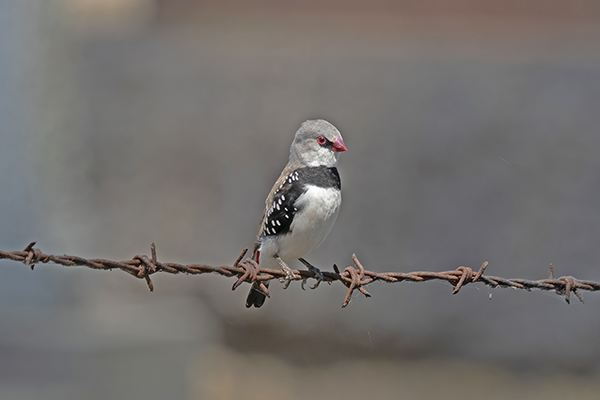Australia is home to many species of Honeyeater ranging from the positively gaudy to the drab 'little brown jobs'. I've found myself a temporary local patch within walking distance of our daughters reserve. Its a remnant of protected bushland designated Chiltern I85 Bushland Reserve and has a dam adjacent to the road leading to the local cemetry. If you've birded in Australia you'll know that dams are natural water run offs that are dammed to hold water when it rains. Along a small water course you'll find loads of dams and the water is used for irrigation and livestock. This one has the added benefit of being adjacent to the bushland and is a magnet for thirsty birds coming to drink.
I walk the site most days and submit all my records via eBird to the local breeding bird portal. I've already had three species 'flagged' as either being rare or out of range which shows the benefit of working a small local area. In particular the dam attracts loads of honeyeaters and so far I've recorded Brown-headed, Yellow-tufted, Black-chinned (locally rare), Fuscous and the ubiquitous White-plumed Honeyeaters.
 |
| Black-chinned Honeyeater |
 |
| Black-chinned & White-plumed Honeyeaters |
 |
| Brown-headed Honeyeater |
 |
| Fuscous Honeyeater |
 |
| Black-chinned & White-plumed Honeyeater |
 |
| Above & below: Yellow-tufted Honeyeater |
 |
| Brown-headed Honeyeater |
As well as these smaller Honeyeaters the dam has attracted some of their larger relatives - both of which are pretty ugly to be honest - Noisy & Little Friarbird.
 |
| Little Friarbird |
 |
| Noisy Friarbird |
Other species I've had 'flagged' include Satin Bowerbird as the area is apparently out side the usual range (although they're known to be 20km away) and Double-barred Finch which, again, I've seen where Amy & Jeremy used to live:
"The species you reported was flagged for review and is unusual for this date and/or location. Could you please edit your checklist to add field notes or a description of the bird in question and other information about how you identified this species? Essential things to cover include size, shape, color pattern, behavior, vocalizations (if heard), and habitat. Notes on how similar species were eliminated are especially important".
In all cases I've gone back and attached photos to my eBird submission.
 |
Female type Satin Bowerbird
|
 |
Double-barred Finch (sometimes called Owl Finch)
I've also been lucky enough to see several Diamond Firetails. These are really stunning little birds and extremely photogenic.
With the temperatures hitting a blood thickening 37 C here by midday most of my birding is finished by 11 am with perhaps an evening walk before it gets dark.
|











































































No comments :
Post a Comment